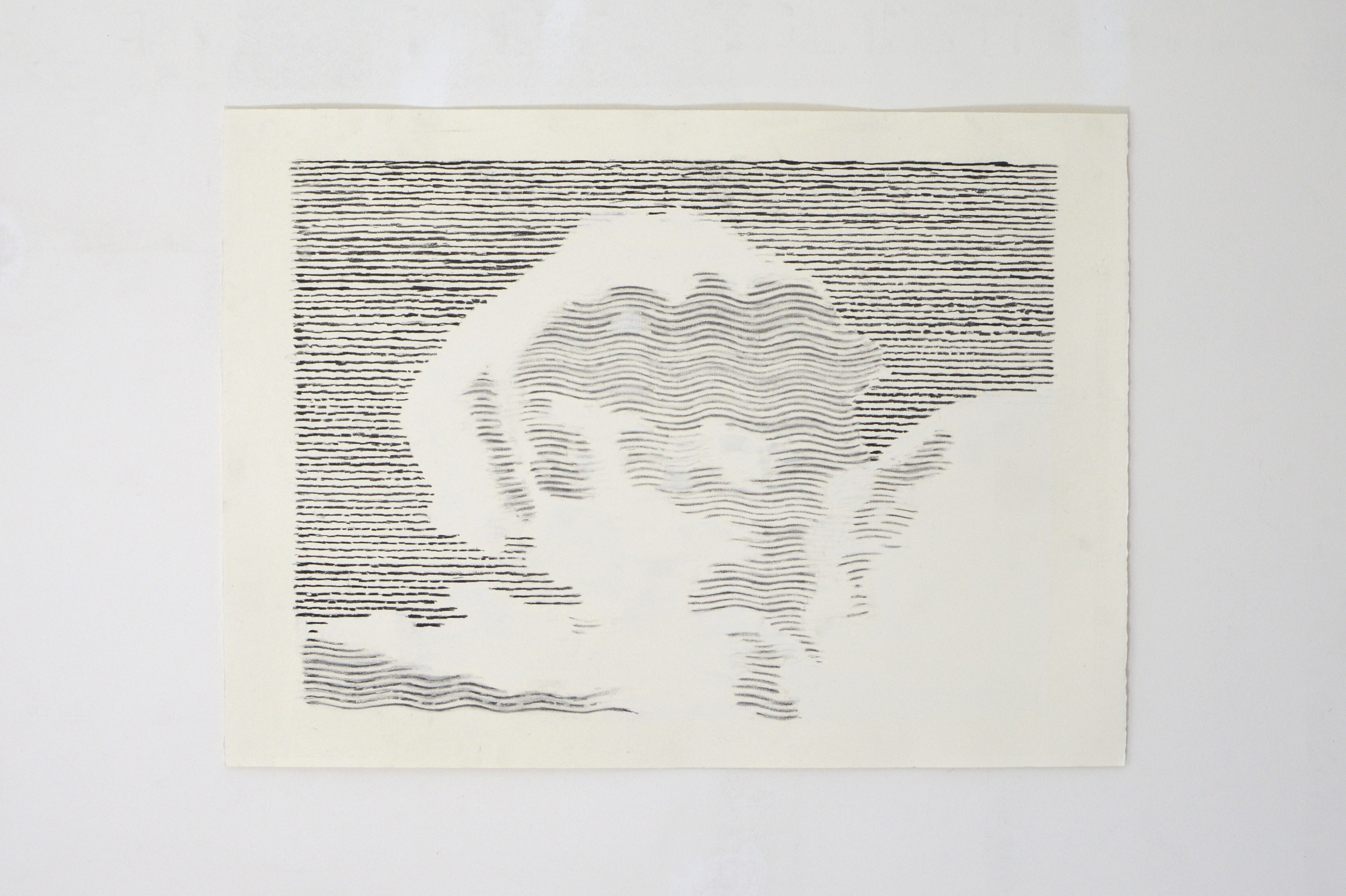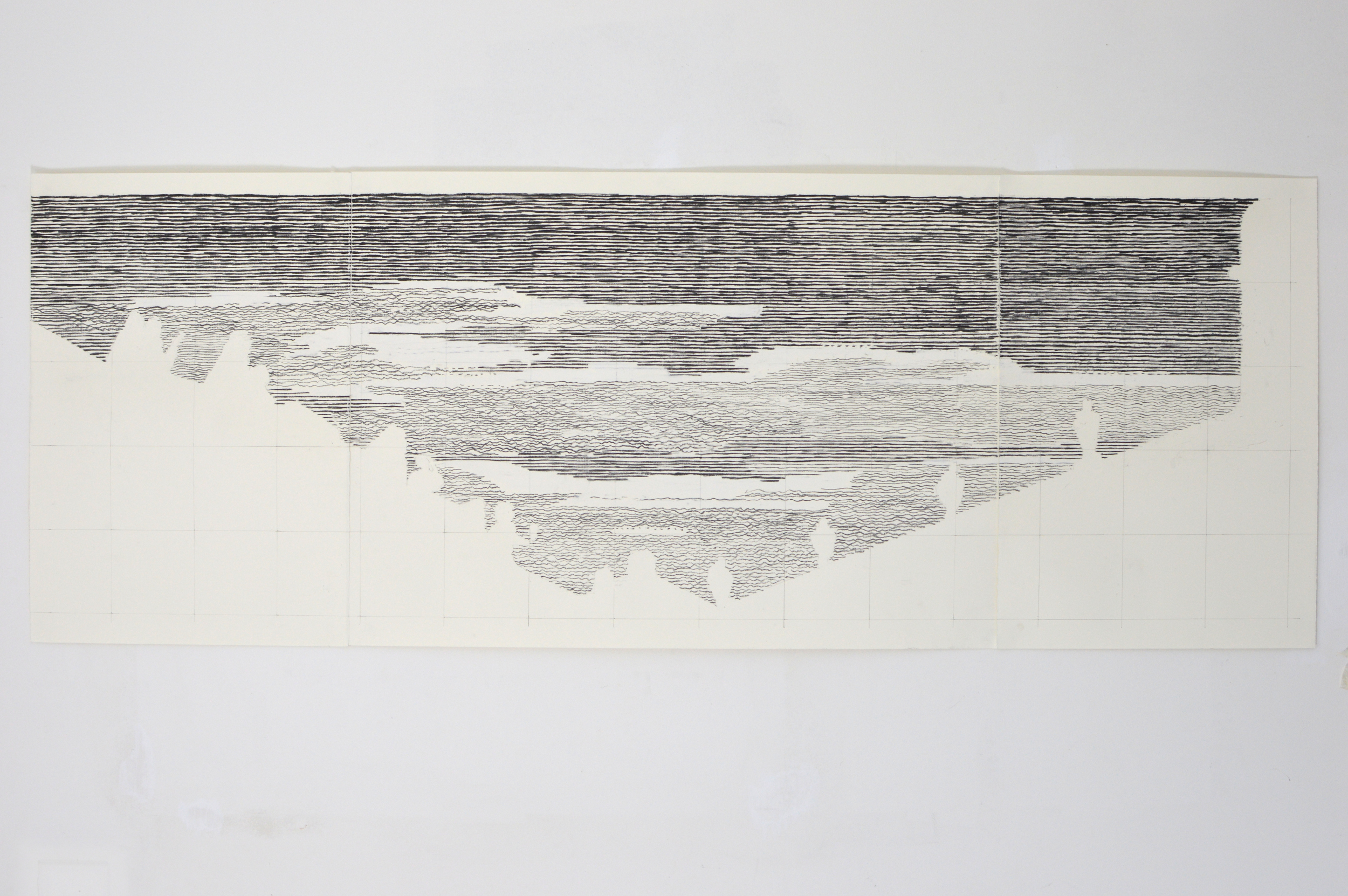
Bank of England 1804 (no.1), 2020, charcoal on Fabriano cotton paper, 380 cm x 110 cm

Bank of England 1804 (no.2), 2020, charcoal on Fabriano cotton paper, 110 cm x 76 cm
I like to think of my drawings as visual investigations that enrich my experience of interpreting history. While drawing is my primary mode of expression as an artist, I am continually engaged in the materiality of paintings as I am currently studying the conservation of easel paintings.
The body of work I submitted for my degree show are transcribed areas of cloudy skies from 19th century engravings of the Bank of England. These line drawings are instilled with a sense of movement that disrupts the viewer’s consideration of a supposedly stable institution. Drawn in charcoal on paper, the method of production is simple and direct. In the largest of the works, multiple sheets of paper amass to form an expansive panorama that becomes progressively amorphous the closer you get. I want these drawings to have a fragmented and unstable quality that is implicit upon prolonged observation. I hope they are somewhat reflective of the period of time in which they were made.

Bank of England 1814 Detail, 2020, charcoal and chalk on Fabriano paper, 76 cm x 55 cm

Bank of England 1814, 2020, charcoal on Fabriano paper, 110 cm x 76 cm

Bank of England Lothbury Court (no.1), 2020, charcoal on Fabriano paper, 152 cm x 55 cm

Bank of England Lothbury Court (no.2), 2020, charcoal on Fabriano paper, 76 cm x 55 cm

Bank of England 1804 (no.1), 2020, charcoal on Fabriano cotton paper, 380 cm x 110 cm

Bank of England 1804 (no.2), 2020, charcoal on Fabriano cotton paper, 110 cm x 76 cm
I like to think of my drawings as visual investigations that enrich my experience of interpreting history. While drawing is my primary mode of expression as an artist, I am continually engaged in the materiality of paintings as I am currently studying the conservation of easel paintings.
The body of work I submitted for my degree show are transcribed areas of cloudy skies from 19th century engravings of the Bank of England. These line drawings are instilled with a sense of movement that disrupts the viewer’s consideration of a supposedly stable institution. Drawn in charcoal on paper, the method of production is simple and direct. In the largest of the works, multiple sheets of paper amass to form an expansive panorama that becomes progressively amorphous the closer you get. I want these drawings to have a fragmented and unstable quality that is implicit upon prolonged observation. I hope they are somewhat reflective of the period of time in which they were made.

Bank of England 1814 Detail, 2020, charcoal and chalk on Fabriano paper, 76 cm x 55 cm

Bank of England 1814, 2020, charcoal on Fabriano paper, 110 cm x 76 cm

Bank of England Lothbury Court (no.1), 2020, charcoal on Fabriano paper, 152 cm x 55 cm

Bank of England Lothbury Court (no.2), 2020, charcoal on Fabriano paper, 76 cm x 55 cm
